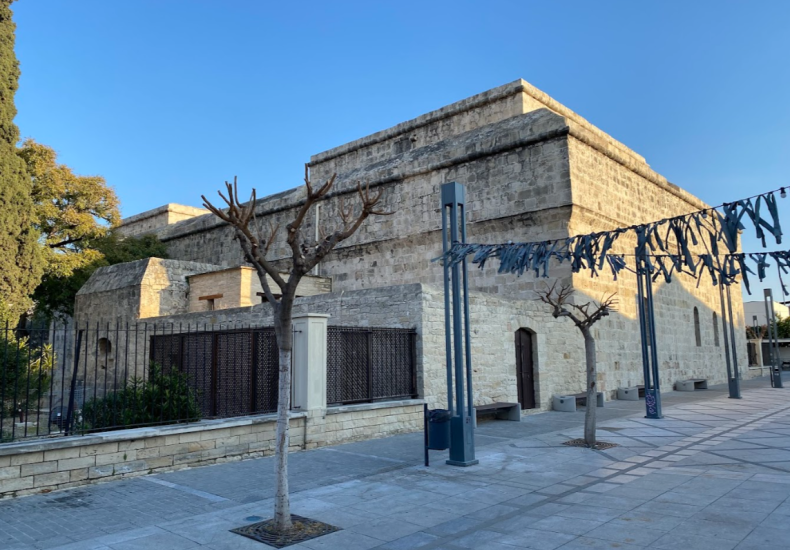
Limassol Castle: A Stone Sentinel at the Heart of the Old City
In the center of Limassol’s historic quarter, nestled among cobblestone streets and bustling cafés, stands Limassol Castle — a silent witness to centuries of history, power struggles, love stories, and cultural transformation. This medieval structure is more than a monument; it’s a living chronicle of Cyprus’s layered past and a must-visit site for anyone exploring the island’s southern coast.
Whether you’re a history buff, a curious traveler, or simply drawn to the romance of ancient architecture, Limassol Castle offers an immersive and unforgettable experience.
A Glimpse Into the Past
Limassol Castle’s foundations stretch deep into history. The structure seen today was rebuilt during the Ottoman period (around the 16th century), but its story begins long before that. Excavations beneath the castle reveal layers of earlier fortifications — including traces of a Byzantine castle and even Roman ruins.
Perhaps most famously, the castle is believed to have hosted the marriage of Richard the Lionheart and Berengaria of Navarre in 1191, making it the only royal wedding of an English king to take place outside of England.
Architecture and Atmosphere
Built of thick stone with a square layout and corner towers, the castle’s design is modest yet imposing. It’s not an extravagant fortress like those found elsewhere in Europe, but its strength lies in its simplicity and resilience. The outer walls are weathered, but the interior has been carefully restored.
As you step inside, you’re welcomed by vaulted ceilings, arched passageways, and shadowy corridors that echo with whispers of the past. The upper level offers a panoramic view of Limassol’s old town, marina, and coastline.
What You’ll Discover Inside
Today, Limassol Castle houses the Medieval Museum of Cyprus, a fascinating collection of artifacts and exhibits that span hundreds of years. Here’s what to look for:
🛡️ 1. Weapons and Armor
- Swords, spears, and chainmail from various medieval periods
- Displays showing how knights and soldiers were equipped for battle
⛪ 2. Religious Relics
- Carved crosses, icons, and stone reliefs from early Christian and Byzantine periods
- Tombstones and ceremonial items once used in local churches
🍶 3. Everyday Life in the Middle Ages
- Pottery, household tools, and textiles
- Jewelry and coins that reveal trade routes and social customs
🏰 4. The Castle Itself
- Wander through dungeons, chapels, and lookout towers
- Climb narrow staircases for views of the old town and harbor
A Castle With Many Lives
Limassol Castle has served many roles throughout its lifetime:
- A Crusader fortress during the time of Richard the Lionheart
- An Ottoman garrison and prison, complete with solitary cells and graffiti carved by inmates
- A British administrative building during colonial times
- A museum, open to the public since the 1980s
Each phase left its mark, and as you move from room to room, the walls themselves seem to tell the story.
Tips for Visiting Limassol Castle
- Wear comfortable shoes — the stone floors and staircases can be uneven
- Give yourself 1–2 hours to explore thoroughly
- Visit early or late in the day to avoid crowds, especially in summer
- Don’t miss the rooftop — the view is a highlight
- Bring a camera — photography is allowed (without flash)
Nearby Attractions
After your castle visit, explore more of Limassol’s historic center:
- Limassol Marina — modern shops and seaside dining just a short walk away
- Old Market & Saripolou Square — full of life, flavors, and local charm
- Agia Napa Cathedral — a beautiful Orthodox church with stunning frescoes
- Carob Mill Museum — offering insight into Limassol’s agricultural heritage
Perfect For:
- History lovers looking to connect with the medieval Mediterranean
- Couples drawn to romantic legends and atmospheric settings
- Families seeking an educational, yet engaging activity
- Photographers and artists inspired by ancient textures and coastal light
Getting There
- By foot: Easily walkable from anywhere in the old town
- By car: Parking lots are available nearby, though spots fill quickly in high season
- By bus or taxi: The castle is a well-known local landmark and easy to reach from anywhere in Limassol
A Personal Reflection: More Than Just Stone
What makes Limassol Castle so special is not just its architecture or artifacts — it’s the feeling you get as you wander through its thick walls and sun-dappled courtyard. It’s imagining the royal wedding, hearing the echo of swords in the armory, and sensing the resilience of a structure that has seen empires rise and fall.
Here, history isn’t kept behind glass. It surrounds you. It invites you in.
Final Thoughts
Limassol Castle may not be the largest or most ornate fortress in Europe, but it offers a rare combination of intimacy, authenticity, and storytelling. It’s a place where centuries overlap, where myth and memory coexist, and where every visitor leaves with a sense of Cyprus’s rich and resilient spirit.
If you’re in Limassol, carve out time for this remarkable landmark. It’s a quiet giant in the city’s heart — and one that rewards every step with echoes of the past and views of the present.